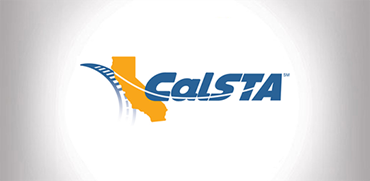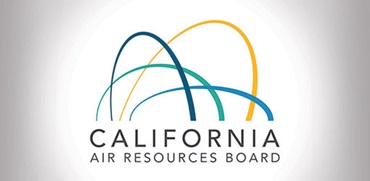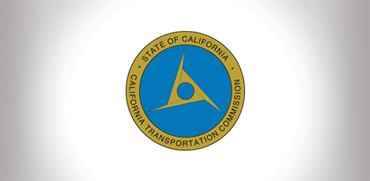Corridor and System Planning
The Office of Corridor & System Planning plays a vital role in developing and implementing statewide plans, multimodal corridor plans, and supporting project development and operational improvements. Our office provides policies, procedures, tools, analysis, training, and technical assistance to ensure effective corridor and system planning.
As a key liaison, we assist in the design and management of transportation corridors—including highways, railways, and public transit routes—ensuring they support the efficient, safe, and sustainable movement of people and goods. Our work aligns with economic, environmental, and community goals by integrating comprehensive planning strategies, fostering collaboration, and leveraging data-driven decision-making to enhance California’s transportation network.
Key Components
1. Corridor Planning
Corridor planning involves studying and optimizing key transportation corridors, such as major highways or rail lines, which serve as essential links between regions. This process assesses infrastructure needs, traffic patterns, and anticipated growth to improve accessibility, reduce congestion, and enhance safety. Additionally, corridor planning often includes environmental impact assessments, land use coordination, and community engagement to ensure sustainable and minimally disruptive development.
2. System Planning
System planning focuses on the overall transportation network, integrating various corridors and transport modes, such as highways, public transit, railways, bike paths, and pedestrian routes. It addresses transportation needs at regional or statewide levels, ensuring the network meets both current and future demands. This includes developing strategies for multimodal integration (e.g., coordinating buses with rail systems), improving connectivity, and supporting economic development.
Caltrans Corridor Planning Process Guide
The Caltrans Corridor Planning Process Guide (Guide) was prepared for the California Department of Transportation (Caltrans) by the Division of Transportation Planning in April 2022 for use in preparing corridor planning documents. This Guide establishes a comprehensive planning approach through desired protocols and procedures to identify and implement multimodal transportation needs. It is neither intended as nor does it establish a legal standard for these functions.
Emphasis Area Guides
These supplementary guides expand on the Corridor Planning Guide with additional information and guidance on specific emphasis areas and planning topics. Please select the EA guide from the links provided.
| Active Transportation | Active Transportation Emphasis Area Guide |
| Climate Action | Caltrans Climate Change Emphasis Area Guidance for Corridor Planning |
| Freight | Corridor Planning Freight Emphasis Area Guidance |
| Rail and Transit Emphasis Area Guide | Under Development |
District System Management Plan Guidelines
The District System Management Plan (DSMP) is a long-range (20 year) strategic and policy planning document that presents the long-range goals, policies, and programs the district intends to follow in maintaining, managing, and developing the transportation system. It serves as a resource for informing federal, state, regional, and local agencies, and the public and private sector of the plans the district intends to follow in the partnership role with local and regional agencies.
Statewide Plans
| Plan | Link |
| Caltrans System Investment Strategy (CSIS) | Caltrans System Investment Strategy (CSIS) | Caltrans |
|
Interregional Transportation Plan (ITSP) (Website under development) |
2021 Interregional Transportation Strategic Plan Interregional Transportation Strategic Plan Addendum 2022 California Interregional Transportation Strategic Plan (ITSP) Corridor Overview |
Planning for Operations Strategic Work Plan
Planning for Operation is concept meant to promote multimodal planning that supports transportation system management and operations. System management strategies typically have high benefit/cost ratios and help Caltrans achieve its goals of system performance, stewardship, safety, and operational efficiency. New and evolving federal and State policies direct Caltrans to improve its system management planning practices as a basis for performance-based decision-making. Intelligent Transportation Systems (ITS) planning and deployment is an important component of Planning for Operations activities. This project developed a statewide framework for planning for operation at Caltrans. This was accomplished by developing and coordinating processes for integrating Caltrans' mission, vision, and goals into multi=modal planning for operations activities, as well as providing an action plan with goals, steps, roles, and responsibilities. The outcome of implementing this Strategic Work Plan will be improvements in Caltrans business practices to deliver safe, sustainable, and efficient operational strategies system-wide over the long term.
23 U.S.C. 135 – Statewide and non-metropolitan transportation planning (↗)
Defines required statewide transportation planning practices and processes.
California Government Code Section 65086 (Transportation Planning and Programming) (↗)
The Department of Transportation, in consultation with transportation planning agencies, county transportation commissions, counties, and cities, shall carry out long-term state highway system planning to identify future highway improvements.
Executive Order N-19-19 (2019) (↗)
Governor signed an executive order requiring every aspect of state government to redouble its efforts to reduce greenhouse gas emissions and mitigate the impacts of climate change while building a sustainable, inclusive economy.
Project Initiation
State-Sponsored
- State-Sponsored Non-SHOPP PID Project Nomination Guidance (PDF)
- State-Sponsored Non-SHOPP PID Scoring Rubrics (PDF)
Locally Sponsored PID CAPTI Assessment Guidance
The Locally Sponsored Project Initiation Document (PID) Climate Action Plan for Transportation Infrastructure (CAPTI) Assessment is a Caltrans tool, consistent with the Project Development Procedures Manual (PDPM), designed to guide both local agencies and Caltrans staff in the development of PIDs for projects on the State Highway System (SHS). This process supports early coordination between partners to shape project concepts and scopes that help advance the CAPTI objectives and other statewide transportation priorities. By completing the assessment early in the PID process, both parties can identify opportunities to incorporate elements that support safety, climate resilience, expand multimodal access, and benefit underserved communities.
- Local-Sponsored PID Assessment Guidance (PDF)
- Appendix B – Initial CAPTI Assessment and Impact Scores (DOCX)
- Appendix C – CAPTI Assessment Memo Template V3 (PDF)
- Appendix D – Locally Sponsored PID Evaluation Project Intake Form (↗)
- Appendix G – 60 Percent CAPTI Assessment Form (DOCX)
Accessibility Assistance
Caltrans makes every attempt to ensure our documents are accessible. Due to variances between assistive technologies, there may be portions of this document which are not accessible. Where documents cannot be made accessible, we are committed to providing alternative access to the content. Should you need additional assistance, please contact us at (916) 654-2852 or visit https://dot.ca.gov/request-ada-compliant-documents.
Featured Links
Latest Updates
If you have questions or would like the latest news from the Corridor and System Planning Office, please email our team using the contacts below.
For information on the Corridor Planning Process Guide or Corridor Plan updates, contact CaltransCorridorPlanning@dot.ca.gov.
For updates on the Interregional Transportation Strategic Plan (ITSP), contact ITSP@dot.ca.gov.
For locally sponsored Non-SHOPP PID updates, contact ocsp-pid@dot.ca.gov.
Frequently Asked Questions (FAQs)
Related Links
Contacts
- Gustavo Alfaro| Office Chief, Corridor & System Planning
- Timothy Hart| Planning, Operations Program Manager
- Binoy Alexander | PID Nomination Program Manager
- Florigna Feliciano| Interregional Program Manager
- Larissa Lee| Corridor Planning Manager
- Mona Elbadawy| Associate Transportation Planner
- Somy Riyazat| Associate Transportation Planner
- Joseph Shaer| Associate Transportation Planner
Website Feedback
Please take a few moments to share your thoughts on how we can improve your experience with the Division of Transportation Planning website.




